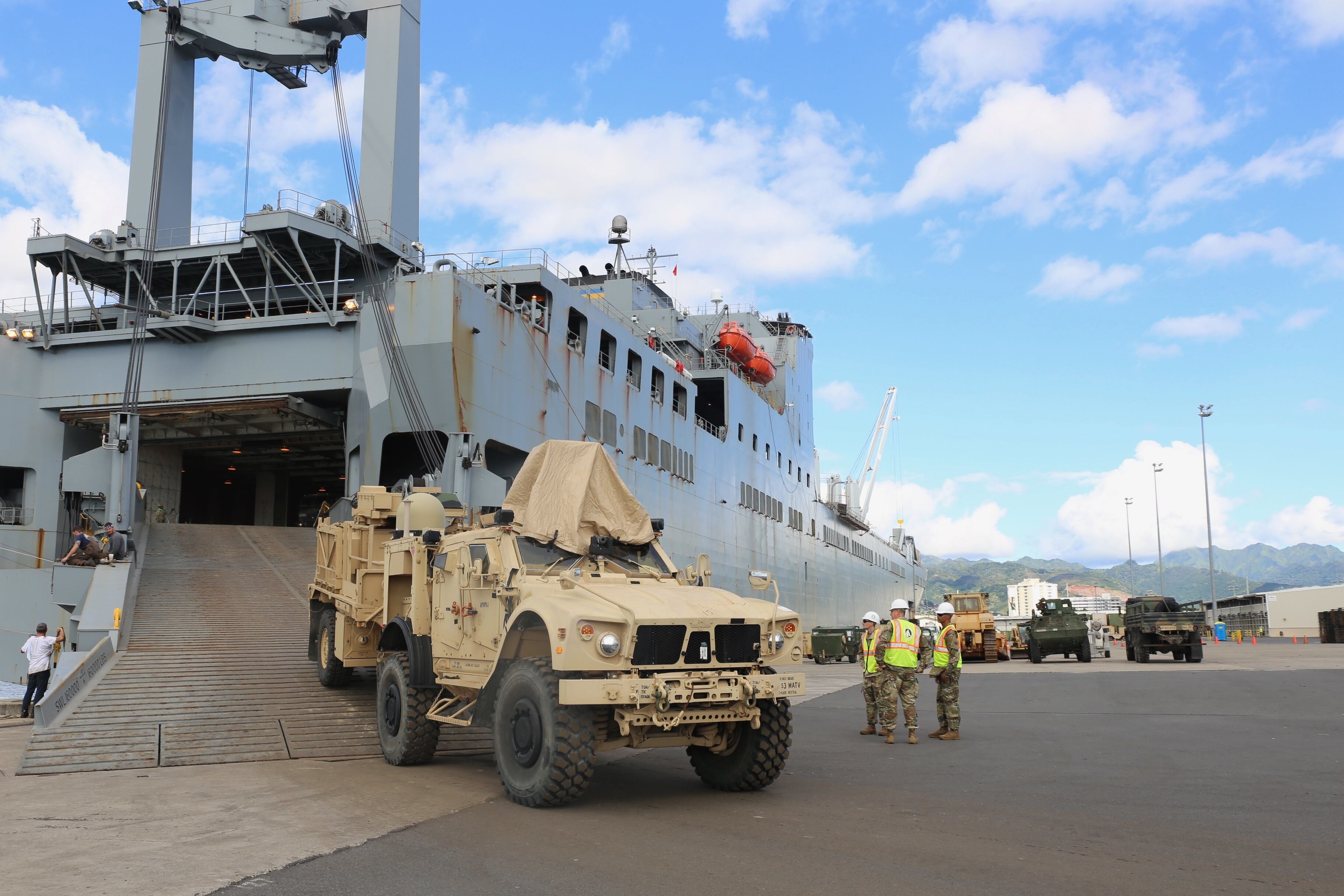This story has been updated to add that U.S. Transportation Command would be interested in new purpose-built sealift ships as a longer-term solution to recapitalizing the fleet but is focused on buying used ships as a near-term solution.
WASHINGTON — The head of U.S. Transportation Command is focused on recapitalizing the nation’s sealift fleet with used vessels, rather than designing and building new ones as suggested by a congressional panel.
The average ship in the sealift fleet is 46 years old, and Gen. Jacqueline Van Ovost said Friday that the Navy and the Transportation Department are facing increasingly large maintenance bills for these ships, which would move about 90% of vehicles and materiel to a conflict.
Transportation Command has noted that 37 of the 50 large roll-on/roll-off vessels in the sealift fleet — many converted car carriers that would haul heavy platforms and gear into theater — are set to retire in the next decade.
In 2019, Congress approved a plan to buy seven used vessels as one step in recapitalizing this fleet, much of which was built following sealift failures in the Gulf War and is now nearing the end of its planned service life.
A vessel acquisition manager bought two of these vessels, but today’s hot commercial market has left the government unable to buy the next two for which Congress appropriated money. The manager had selected the next two vessels for purchase, but those ships were pulled off the market due to increasing commercial shipping demands, Van Ovost said.
The general noted she wants to continue buying used vessels at a consistent rate of two per year, and perhaps at a higher rate if the market cools and the government can afford to recapitalize faster.
Asked about the possibility of designing and building new sealift ships, she said that although “everybody loves that new ship smell,” continuing with the buy-used plan provides better bang for the buck. A TRANSCOM spokesman later added that the new ships would be welcome down the line but that TRANSCOM is focused on the buy-used strategy currently authorized by Congress as a way to field capability on a shorter timeline.
Under the proposal in the House’s version of the fiscal 2023 National Defense Authorization Act, the Maritime Administration, which is part of the Transportation Department, would design and build up to 10 ships in a U.S. shipyard. For that plan to be implemented, the Senate must also agree, and Congress would have to add funding to the department’s budget.
“Do we really need it, is the question, and then do we have the capacity here in America to build that ship? And the balance of resources and return on investment — what does that look like?” Van Ovost said. “From the bang-for-the-buck [perspective], you get a 15-year-old ship, and that’s got some real bang for the buck. It’s like buying a used car versus buying that new car: When it comes off the lot, you lose 20% [of its value]. So we’re going to continue forward with the vessel acquisition manager, we have the funding.”
Though the first attempt to buy the third and fourth used vessels didn’t pan out, she said the money from Congress won’t expire for a few more years. The government is looking for suitable options on the market and will have the money in hand when an opportunity arises, she explained.
Van Ovost said a Mobility Capability Requirements Study validated the square footage of sealift capacity the military needs for various operational plans, which means her command has a good understanding of its needs compared to the state of the fleet today.
“When they’re on the move, they work great,” she said of the aging ships. But a 2019 turbo activation exercise, which saw the ships scramble into action, proved only 40% could actually get up and running.
Van Ovost said some are near the end of their lives and need to retire, while the better-performing ships could see their service lives extended as the government continues to seek replacements.
Megan Eckstein is the naval warfare reporter at Defense News. She has covered military news since 2009, with a focus on U.S. Navy and Marine Corps operations, acquisition programs and budgets. She has reported from four geographic fleets and is happiest when she’s filing stories from a ship. Megan is a University of Maryland alumna.





